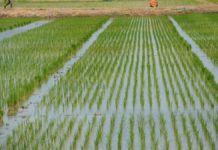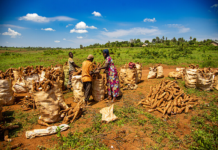A growing population, need for exports and the emergence of new pests are cited as key reasons behind the proliferation of agrochemicals in Kenya, some of which have been deemed harmful to humans and the environment.
Gaps in the country’s legislation have encouraged misuse and abuse of pesticides, resulting in the use of smuggled, banned or even obsolete products.
This has provided the impetus for a petition presented to the country’s parliament by a cross section of civil society groups fronted by a legislator, seeking to ban harmful pesticides from the Kenyan market.
“Our food safety is compromised by harmful agricultural chemicals exceeding levels allowed by European authorities,” states Uasin Gishu Woman Representative Gladys Boss Shollei, who is at the forefront of the push. “We need laws that protect our citizens.”
The misuse and overuse of pesticides has been blamed for rising cases of cancer, respiratory, cardiovascular and nervous system diseases in the country. Other adversities include loss of biodiversity (especially birds) and arthropods.
The petitioners have sought an immediate ban of all products in the Kenyan market classified as carcinogenic, mutagenic, endocrine disruptors and neurotoxic. They also recommend withdrawal of all harmful and toxic pesticides based on the active ingredients used, as well as establishment of a monitoring system on the use of pesticides in the country.
According to Shollei, the volume of pesticide use in Kenya had more than doubled within four years from 6400 tonnes in 2015 to 15600 tonnes in 2018. The increase in pesticide use has not been accompanied by the necessary safeguards to control their application.
Experts in the parliamentary committee report that deliberated the matter note that there were 24 products in the Kenyan market classified as carcinogenic, 24 were classified as mutagenic, and 35 endocrine disrupter. A total of 140 products were classified as neurotoxic, and many that showed apparent effects on reproduction toxicity amounted to 262.
These products have been banned in the United States, the United Kingdom and the European Union.
Fruits and vegetables sampled in the Kenyan market were found to be contaminated with pesticides residues, some of which were above the allowed limits. These included Dimethoate, Bifenthrin, Metribuzin, Cyromazine, metalaxyl and Pyrimethamil. Mango was found to have thiabendazole and contained heavy metals with lead concentration.
Some active ingredients that are not allowed in Europe, such as chlorothalonil, carbendazim, acephate and permethrin have more than one chronic health effect and are sold in many parts of Kenya, note the experts in the report.
Permethrin, a synthetic pyrethroid insecticide mainly applied to grains for post-harvest storage, was withdrawn from Europe in 2003. It poses a risk to the aquatic system and are toxic to bees and other beneficial insects.
Carbendazim is a broad-spectrum fungicide used in the control of rust, mildew, blight and other fungal diseases in various crops. It was withdrawn from use in Europe in 2011.
Its effects on human health include as a possible cause of infertility, and can cause fetal malformation.
Dimethoate, an organophosphorus insecticide, is used on coffee, potatoes, cotton and tobacco. It is possibly carcinogenic, notes the report, and is neurotoxic.
During the pesticides registration process in Kenya, it’s mainly the purity and efficacy of the product that is tested, with hardly any consideration given to data on human and environmental health under local conditions.
Among the requirements for registration of a pesticide in the country, the registrant is expected to prove that the product has been approved for use in jurisdictions with reputable registration systems, such as the US, the EU, Canada and Japan.
What drives pesticide use in Kenya
Kenya’s geographical position along the equator, coupled with climate change, favours the proliferation of pests and diseases all year round. Trans-boundary movement of pests exacerbates the problem.
“The growth in the importation of pesticides increases with demand due to pest and disease pressure and particularly epidemic events,” the report observes.
Recent influxes of pests and diseases have driven pesticide usage. A recent example was the Fall Army Worm invasion, reported in 2016, which led to devastating maize yield losses in parts of the country.
Export markets such as the EU and Australia prohibit the exportation of commodities with pests, and this prompts the use of pesticides.
An increase in farming activities has also been recorded in recent years. In 2018, Kenya recorded significant increases in exports to various countries including the UAE, the Netherlands, Saudi Arabia and Thailand.
Hand weeding has also been affected by labour shortfalls, as more youth venture into non-farming activities such as motorcycle taxis and other services. The government’s push for 100% transition from primary to secondary schools is also cited as a cause for the labour shortfalls, which lead to increased pesticide usage.
The Pest Control Products Board (PCPB) was also cited as incapable of fully executing its role as it was yet to be categorized as a state corporation. It is also noted that PCPB has not been adhering to the World Health Organization (WHO) and Food and Agriculture Organization (FAO) international code of conduct on pesticides management.
It is further noted that there is a general lack of awareness and information on pesticide use and legislation among the different stakeholders, including farmers.
In their prayers, the petitioners also recommend an amendment to the pest control products law to include a list of products that have been withdrawn from the market based on the severe health risks posed to Kenyans.








